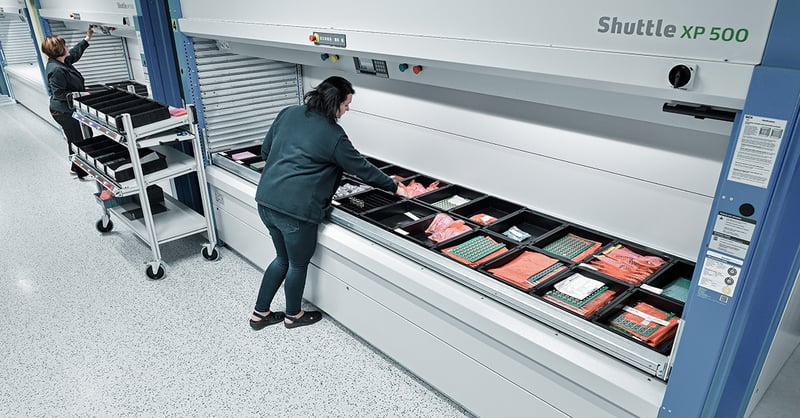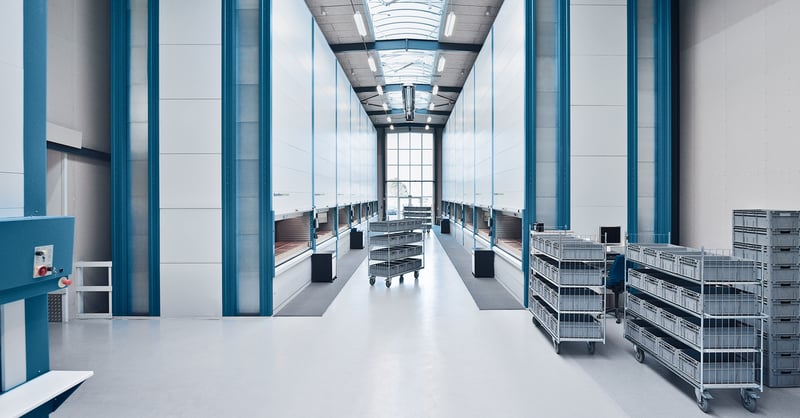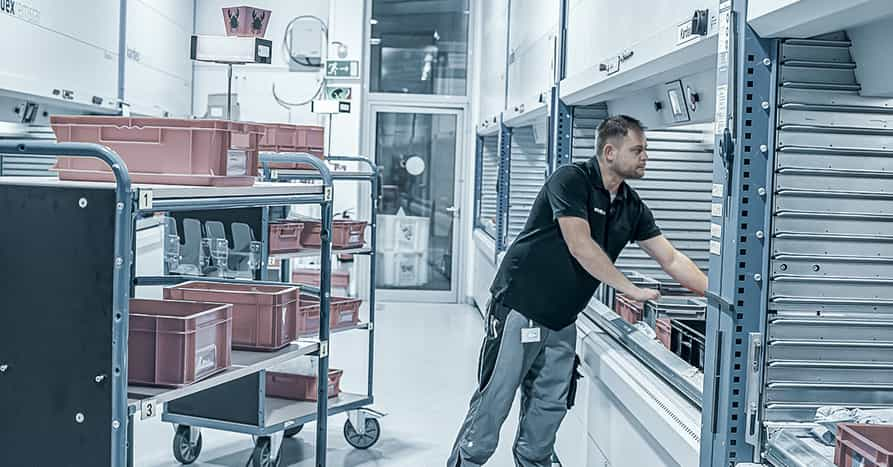Economic turmoil, recessions, and stock market crashes are a fact of life in the modern world. These days more people are planning for when a recession hits more than if a recession is going to hit. Others say it already has hit. Amidst economic uncertainty it’s best to be prepared before things take a turn for the worst. This is even more important for warehouses and distribution centers that are already stretched thin by global supply chain disruptions.
Building resilience into your warehouse is the most surefire way to insulate it from economic turmoil. Here are three major areas that all warehouse managers like yourself should be thinking about in preparation for a recession – labor, space, and inventory – and things you can do to proactively address these potential weak spots before the bad times hit.
1. Reduce Labor Dependency with Automation
To say the current labor challenges have caused headaches for warehouse managers would be an understatement. For some it’s much more than a headache – it’s a full-blown crisis. Warehouses around the country are struggling to get workers on the floor due to low unemployment rates (which have returned to pre-pandemic levels), an aging workforce (especially for warehousing), and an unmotivated labor pool (choosing to work in other industries over warehousing). Factor in the potential for a recession and the labor outlook only gets worse.
Experts are still debating how a recession could impact the warehousing labor market and there are plenty of questions that need answering. Could a recession’s higher unemployment rates drive workers back into the warehouse? How will this labor trend correlate with a drop in consumer spending and revenue for warehouses and distribution centers? Will economic downturn worsen global supply chain disruptions or take pressure off an already stressed system? The truth is that we won’t be able to answer these questions fully until after (and if) a recession hits. Warehouse strategies should instead focus on getting to the root of the issue – cutting ties with labor dependency all together.

The most efficient way to reduce labor dependency and insulate your operation from an unpredictable labor market is with automated warehouse solutions that directly reduce the need for manual labor. Automation technologies like automated storage systems, robotics, and wearable technologies reduce the burden of tedious, injury-prone, repetitive tasks (like palletizing and depalletizing, order picking, packing, etc.) off your labor force. This helps to both reduce the physical demands of warehouse activities, as well as streamline and organize the required tasks for better productivity with fewer workers. These solutions will raise throughput, eliminate picking errors, reduce travel time, and improve ergonomics - ultimately reducing your dependency on labor and cutting its impact on your bottom line.
Another way to insulate your operation from labor volatility during a recession is by implementing a flex labor strategy. Flex labor strategies allow operations to be managed by a few core, full-time employees, then scale up as orders fluctuate by shifting labor from one area to another or using part-time or temporary labor to handle periods of high demand. Flex labor strategies will shine during a recession that impacts consumer buying habits and reduces orders. Having the ability to scale your labor up and down relies heavily on having – yep, you guessed it – automation. Automated solutions are the key to running a successful flex labor strategy because they cause a dramatic uptick in worker productivity and allow for higher throughput with fewer workers.
2. Don't Buy or Build - Optimize Your Current Space
If you’re a warehouse manager currently looking for extra space you’re a) probably struggling to find it, and b) definitely not alone. With the way e-commerce is continuing to explode, plenty of warehouses and distribution centers are struggling with floorspace and looking for solutions. We hear it all the time from our customers, “There’s just no room left! We need more space.” But is buying or building more space really the best idea with a potential recession looming?
Warehouse space is notoriously hard to find, not to mention expensive. Not only is it pricey and difficult to get, it’s a huge investment to make. Investing in more physical space right before a potential drop in revenue is a risk. Mark Dunaway, President – North American Region at Kardex Remstar, had this to say on the topic, “In the face of such economic uncertainty, you really don’t want to build or buy right now. It’s a huge commitment and once you make that commitment, you’re stuck with that space and well, you still have to heat, cool, and light that space even if your revenue starts dropping.”
Instead of taking the risky investment of building or buying more warehouse space, why not optimize your existing floorspace with automation? Automated storage and retrieval systems (AS/RS) — such as Vertical Buffer Modules, Vertical Lift Modules, Vertical Carousel Modules or Horizonal Carousel Modules — all provide massive space saving benefits. By utilizing floor to ceiling storage (vertical space is criminally underutilized in warehouses) ASRS can save up to 85% of floor space. Not only that, an 18-month on average ROI is guaranteed to stop any building plans or property hunts in their tracks.

In addition to using your floorspace more effectively with ASRS, audit your current administration space consumption and explore alternative work options such as hybrid and remote schedules. The pandemic opened the door for many companies to explore remote work opportunities and reduce overhead spending. Now is a great time to sit down with your business’s leaders and look at potential areas to repurpose floorspace. Are there empty administrative office workstations that could be easily reworked and transition to manufacturing or warehouse operations? These are the types of questions that you should be asking in regards to floorspace issues in the face of a recession.
3. Insulate Your Supply Chain With Smart Inventory Management
If there’s one thing that’s a constant in the current material handling landscape, it’s that supply chain disruptions are here to stay. There has been a recent shift from “just-in-time” (JIT) inventory management to “just-in-case” (JIC) inventory strategies. Lean manufacturing and JIT inventory management was all the rage in the 2010’s, but as the pandemic hit and the first major global supply chain disruptions occurred, companies slowly shifted to a JIC strategy to get whatever inventory they could.
In the event of a recession, it is critical to maintain a JIC inventory strategy and not to switch back to JIT unless you absolutely have to due to cash constraints. A recession could mean suppliers going under, and if that happens, you need to be ready with inventory on hand while you seek out alternatives. Simply put, with the supply chain as unstable as it is, inventory is not where you should be looking to save money. It’s unlikely we will see any shift back to JIT inventory strategies until the supply chain stabilizes significantly. Keeping a JIC inventory strategy is an easy commitment and you can always make the switch back to JIT if you feel your supply chain is stable enough or you are really pinched for cash. JIC offers high security and low risk when compared to more drastic responses to potential effects of a recession.
With a JIC inventory strategy, you should ultimately be buying more inventory than you need at any given moment to preemptively combat a future disruption and shortage. That sounds great on paper, but where are you going to keep all that extra inventory? As mentioned above, building or buying more space isn’t the best option in the face of economic uncertainty. We end up right back to where we started, utilizing the space you have more efficiently with warehouse automation solutions. Implement ASRS and optimize your existing warehouse space to ensure your JIC inventory strategy works with the space you have.
In addition to maintaining a JIC inventory strategy, it’s critical to diversify your supplier network now, before a full scale recession hits. During a recession, it’s unfortunately common for business to go under and your supplier network is not immune. That’s why it’s always a good idea to have your purchasing department routinely looking beyond the usual suspects and seeking out new suppliers.
Is a recession coming? Who knows – but taking in-depth look at your labor, space and inventory will have your warehouse prepared.





